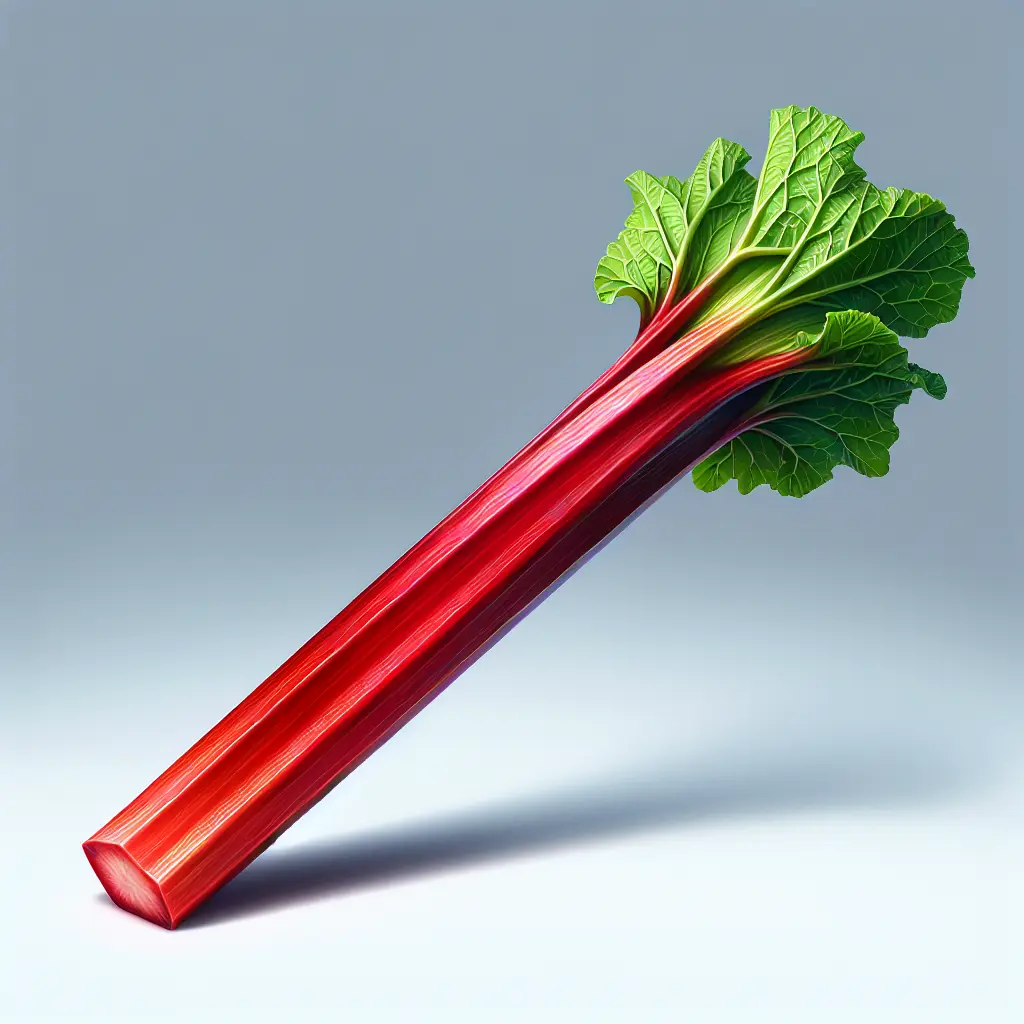Rhubarb: A Springtime Delight
Rhubarb is a perennial plant that is native to Europe and Asia. It has large, reddish-green stalks that are edible. Rhubarb is a member of the buckwheat family, and is related to sorrel and dock.
Although rhubarb is technically a vegetable, it is often used in desserts due to its tart flavor. It can be used to make pies, tarts, jams, and jellies. Rhubarb can also be used in savory dishes, such as stir-fries and salads.
Rhubarb is a good source of vitamins and minerals, including vitamin C, potassium, and fiber. It is also low in calories and fat. One cup of raw rhubarb contains only 11 calories and 0.1 grams of fat.
Nutritional Value of Rhubarb
- Calories: 11
- Protein: 0.5 grams
- Fat: 0.1 grams
- Carbohydrates: 2.3 grams
- Fiber: 0.9 grams
- Sugar: 0.6 grams
- Vitamin C: 10% of the daily value
- Potassium: 6% of the daily value
- Fiber: 4% of the daily value
Health Benefits of Rhubarb**
Rhubarb has several potential health benefits, including:
- Improved digestion. The fiber in rhubarb can help to promote regularity and prevent constipation.
- Reduced inflammation. Rhubarb contains antioxidants that can help to reduce inflammation throughout the body. This may be beneficial for people with conditions such as arthritis or inflammatory bowel disease.
- Lowered blood sugar. Rhubarb may help to lower blood sugar levels in people with type 2 diabetes.
- Boosted immunity. Rhubarb is a good source of vitamin C, which is essential for a healthy immune system.
How to Enjoy Rhubarb**
Rhubarb can be enjoyed in a variety of ways. Here are a few ideas:
- Raw. Rhubarb can be eaten raw, but it is important to remove the leaves first, as they are poisonous. Raw rhubarb can be sliced and added to salads or smoothies.
- Cooked. Rhubarb can be cooked in a variety of ways, including boiling, baking, or stewing. Cooked rhubarb can be used to make pies, tarts, jams, and jellies. It can also be used in savory dishes, such as stir-fries and salads.
- Baked. Rhubarb can be baked into muffins, cakes, and other desserts. Baked rhubarb is a delicious way to enjoy this unique vegetable.
Rhubarb Recipes**
Here are a few recipes for rhubarb:
- Rhubarb Pie
Ingredients:
- 1 cup sugar
- 1/4 cup cornstarch
- 1/2 teaspoon ground cinnamon
- 1/4 teaspoon ground nutmeg
- 4 cups rhubarb, chopped
- 1 tablespoon lemon juice
- 1 tablespoon butter, melted
- 1 (9-inch) pie crust
Instructions:
- Preheat oven to 375 degrees F (190 degrees C).
- In a medium bowl, combine sugar, cornstarch, cinnamon, and nutmeg.
- Stir in rhubarb, lemon juice, and butter.
- Pour filling into pie crust.
- Bake for 45-50 minutes, or until crust is golden brown and filling is bubbly.
- Rhubarb Jam
Ingredients:
- 4 cups rhubarb, chopped
- 1 cup sugar
- 1/4 cup lemon juice
- 1 package (1.75 ounces) powdered pectin
Instructions:
- In a large pot, combine rhubarb, sugar, and lemon juice.
- Bring to a boil over medium heat.
- Stir in pectin.
- Reduce heat to low and simmer for 1 minute, or until thickened.
- Pour jam into jars and seal.
Rhubarb is a versatile and delicious vegetable that can be enjoyed in a variety of ways. Its tart flavor and nutritional value make it a great addition to any diet.
How many calories are in Rhubarb?
Each 1 stalk of Rhubarb contains 11 calories.
Rhubarb Nutritional Information
| Nutrient | Amount per 1 stalk (51g) |
|---|---|
| Calories | 11 Calories |
| Protein | 0.5g |
| Fat | 0.1g |
| Saturated Fat | 0g |
| Cholesterol | 0mg |
| Carbohydrates | 2.3g |
| Dietary Fiber | 0.9g |
| Sugar | 0.6g |
| Sodium | 0.002mg |
| Potassium | 0.1469mg |
| Calcium | 0.044mg |
| Iron | 0.0001mg |
